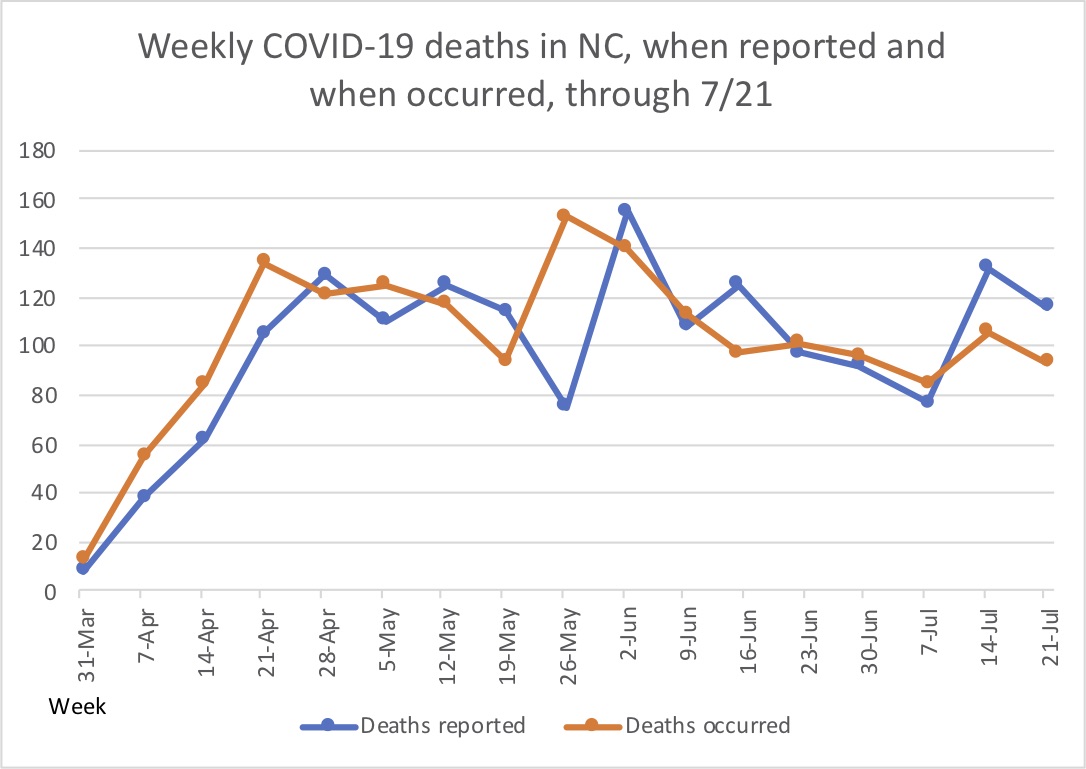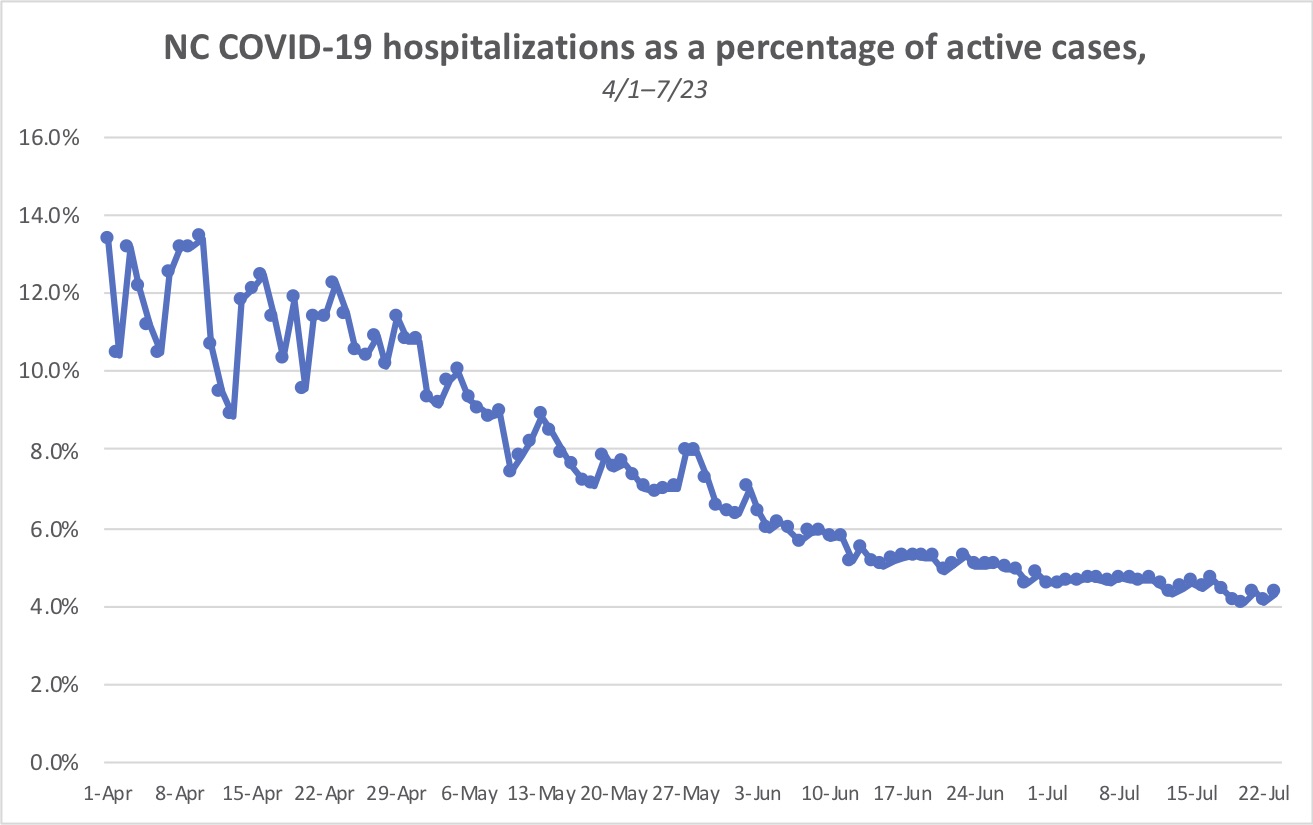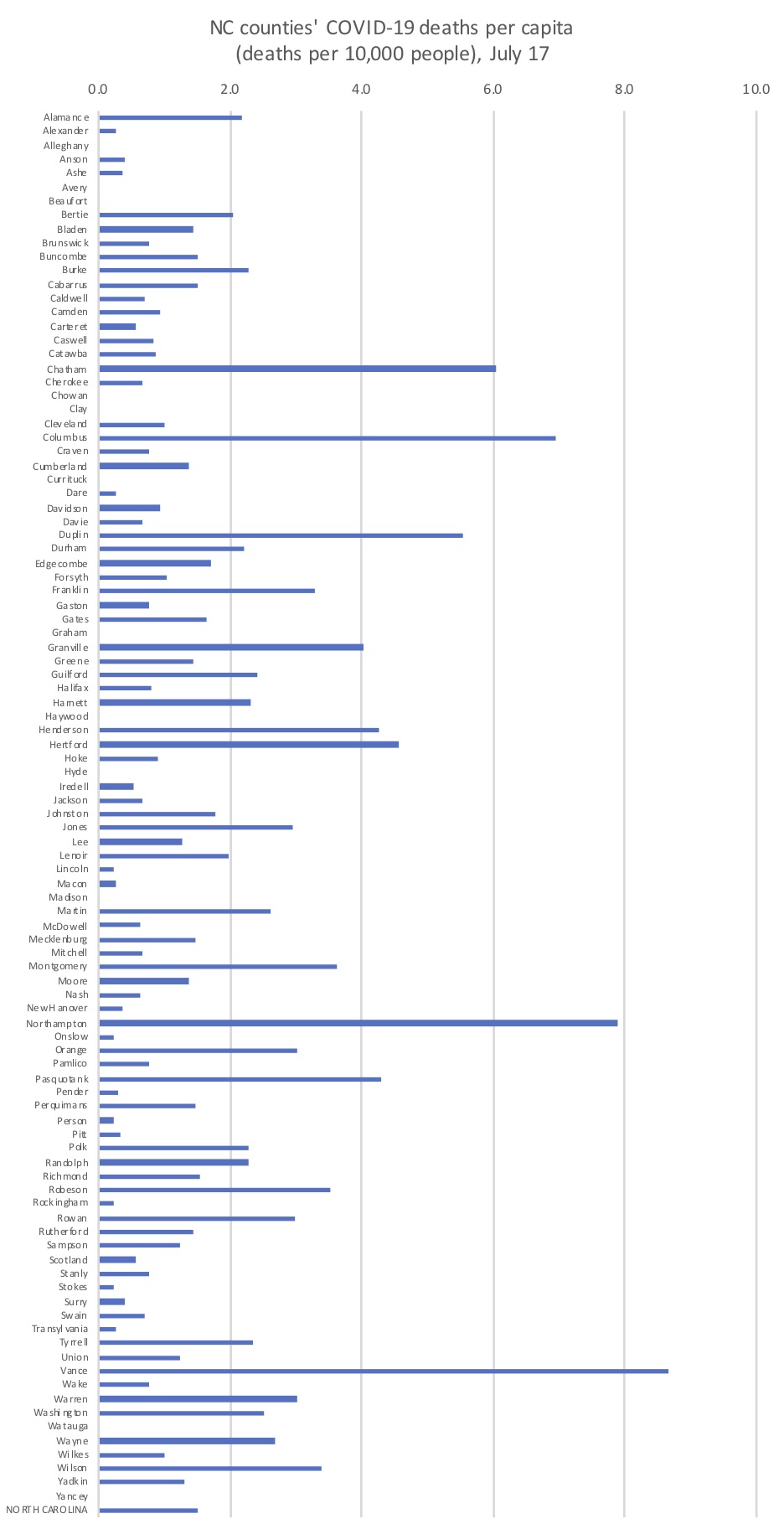Percent of known COVID-19 cases resulting in death
The above chart is a rough way of looking at how deadly the known cases of COVID-19 are. It takes the seven-day rolling average of deaths and compares it to the seven-day rolling average of cases three weeks prior. (Deaths are a lagging indicator of the virus by about three weeks after exposure.)
It’s important to know that what media report as “cases” are not the same as infections. An infection is any time someone has the virus, whether that person feels sick or not. A case is when an infection has been confirmed by testing. For sake of clarity, I have been using the term known cases.
If there’s a trend, it should be visible and help us determine what we’re seeing with reported new cases. Is it more a dangerous rise in the virus itself, as media and the Cooper administration are promoting? Or is it more a result of more extensive testing finding the more asymptomatic or barely symptomatic cases that weren’t included in the first few months’ worth of testing?
On the latter point: New research published July 21 by JAMA estimates that from March 23 to May 12 there were from 6 to 24 times more infections than known cases across the U.S.
COVID-19 deaths, as reported vs. when occurred
Deaths reported by DHHS on a particular day are not the same as deaths occurring on that day. When those deaths actually occurred can span several previous days, and outsiders can never be sure which days they were. Observing DHHS stats shows that any particular day’s death numbers are increased sometimes weeks later. This chart shows by week when COVID-19 deaths in NC were reported vs. when they occurred.

Hospitalizations as a percentage of active cases
Many of the headlines lately focus on hospitalizations. As this chart shows, hospitalizations as a percentage of active cases remain flatlined.

Per-capita COVID-19 deaths per county
The Cooper administration insists upon treating every area across the state with the same extreme restrictions, be it business shutdowns, personal restrictions, or K-12 school strictures. A look at how the virus is affecting North Carolina’s different counties can provide insight into whether such one-size-fits-all orders are warranted.



